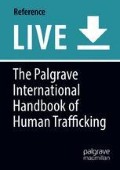Abstract
The post-emancipation era was defined by the United States’ attempts to come to terms with the loss of slavery and to renegotiate its economic and political position in a global context. By moving slavery into the historic past, politicians remodeled the United States as part of the antislavery alliance with Britain and other European nations, for whom slavery and its eradication was approached with a missionary zeal, representing a key pillar in their imperialist foreign policy. However, many in the United States were unable to consign slavery as quickly to the history books, and slavery and its legacy was a hugely significant issue as the United States grappled with its own identity on the world stage, with the practicalities of coercive labor practices within its own borders and externally, and with the hardening racial doctrines enabled by theories of social Darwinism that seems to militate against the healing of the wounds caused by almost three hundred years of forced labor practices. Domestically, systems of convict labor and debt bondage kept African Americans and some new immigrants trapped in labor systems akin to slavery, while overseas, as the United States became an imperial power, slavery was used as a justification for intervention, for rejection of imperialism, and as a means to deploy inferior races in civilizing employment, who otherwise would not work. Defining a group of workers as slaves was a rhetorically powerful act during this period, as it became a means for conservatives to control and exclude Chinese laborers from the American body politic, as well as a means to control and limit women’s sexual work by labeling even voluntary prostitution as white slavery. Pointedly observing the inherent racial traits that allowed the continued existence of slavery overseas, for example, in Africa and the Middle East, was a way for the United States to define itself as an antislave power alongside its European competitors. In fact, the rhetoric of this period was defined by the racial othering of both slave and slave owner as the United States used slavery and its legacy to construct a new role on the world stage.
References
Andrew Zimmerman, Alabama in Africa: Booker T. Washington, the German Empire and the Globalisation of the New South (Princeton University Press, 2010)
A.W. McCoy, Policing America’s Empire: the United States, the Philippines and the Rise of the Surveillance State (University of Wisconsin Press, 2009)
Barbara Krauthamer, Black Slaves, Indian Masters: Slavery, Emancipation and Citizenship in the Native American South (University of North Carolina Press, 2013)
Brian Donovan, White Slave Crusades: Race, Gender and Anti-Vice Activism (University of Illinois Press,2006)
Christine Whyte, ‘Between Empire and Colony: American Imperialism and Pan-African colonialism in Liberia 1810-2003’, National Identities, vol. 15, issue 1, 2015
Cindy Hahamovitch, Fruits of their Labour: Atlantic Coast Farmworkers and the Making of Migrant Poverty 1870–1945 (University of North Carolina Press, 1997)
Daniel Pete, Shadow of Slavery: Peonage in the South 1901–1969 (University of Illinois Press, Urbana, 1972)
David Oshinsky, Worse than Slavery: Parchman Farm and the Ordeal of Jim Crow Justice (Simon and Schuster, 2009)
Douglas Blackmon, Slavery by Another Name: the Re-enslavement of Black Americans from the Civil War to World War Two (Anchor Books, 2009)
Eric Love, Race over Empire: Racism and US Imperialism 1865–1900 (University of North Carolina Press, 2004)
Frederick Douglas, The Reason Why the Colored American is not in the World’s Columbian Exposition (Chicago,1893)
James Blount, The American Occupation of the Philippines 1898–1912 (Putnam Books, 1913)
Joanna Poblete, Islanders in the Empire: Filipino and Puerto Rican Labourers in Hawaii (University of Illinois Press, 2014)
Ian Tyrrell, Reforming the World: The Creation of America’s Moral Empire (Princeton University Press, 2010)
Michael Salman, The Embarrassment of Slavery: Controversies of Bondage and Nationalism in the American Colonial Philippines (University of California Press, 2001)
Najia Aarim-Heriot, Chinese Immigrants, African Americans and Racial Anxiety in the United States 1848–1882 (University of Illinois Press, 2003)
Thomas Leonard, Illiberal Reformers: Race, Eugenics and the American Economy in the Progressive Era (Princeton University Press, 2016)
Thomas McCarthy, Race, Empire and the Idea of Human Development (Cambridge University Press, 2009)
William Kiser, Borderlands of Slavery: The Struggle over Captivity and Peonage in the American South West (University of Pennsylvania Press, 2017)
William Van Deburg, Slavery and Race in American Popular Culture (University of Wisconsin Press, 1984)
Author information
Authors and Affiliations
Corresponding author
Editor information
Editors and Affiliations
Rights and permissions
Copyright information
© 2019 The Author(s), under exclusive license to Springer Nature Switzerland AG
About this entry
Cite this entry
Armstrong, C. (2019). Concepts of Slavery in the United States 1865–1914. In: Winterdyk, J., Jones, J. (eds) The Palgrave International Handbook of Human Trafficking. Palgrave Macmillan, Cham. https://doi.org/10.1007/978-3-319-63192-9_110-1
Download citation
DOI: https://doi.org/10.1007/978-3-319-63192-9_110-1
Received:
Accepted:
Published:
Publisher Name: Palgrave Macmillan, Cham
Print ISBN: 978-3-319-63192-9
Online ISBN: 978-3-319-63192-9
eBook Packages: Springer Reference Law and CriminologyReference Module Humanities and Social SciencesReference Module Business, Economics and Social Sciences

